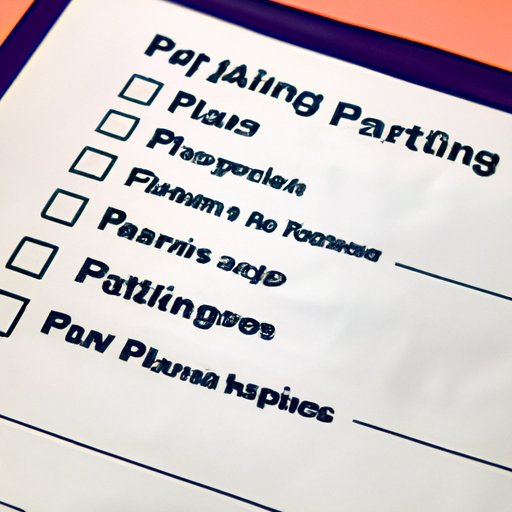Introduction
Having a fitness plan is one of the most effective ways to reach your health and fitness goals. A fitness plan is a set of guidelines that helps you to achieve physical health and wellness through exercise and lifestyle changes. It takes into account your current level of fitness and helps you to design a program that meets your specific needs.
Benefits of having a fitness plan include improved overall health and well-being, increased energy levels, better sleep quality, and reduced risk of chronic diseases such as heart disease, stroke, and diabetes.
Types of Fitness Plans
There are many different types of fitness plans available, depending on your goals and preferences. Some examples include weight loss plans, strength training plans, cardiovascular plans, and flexibility plans. Each plan should include a combination of aerobic exercise, strength training, and stretching.
Creating an Individualized Fitness Plan
When creating an individualized fitness plan, it’s important to take into account your current level of fitness, any medical conditions or injuries you may have, and your goals. You should also consider how much time you can realistically commit to exercising each week. Once you have all this information, you can start designing your own plan.
Your plan should include a variety of exercises that target different muscle groups. You should focus on both aerobic (cardio) exercises and strength training exercises. Examples of aerobic exercises include walking, running, cycling, swimming, and dancing. Strength training exercises can include bodyweight exercises, weights, and resistance bands. You should also include stretching as part of your plan to improve flexibility and reduce the risk of injury.
Setting Realistic Goals
Once you have created your plan, it’s important to set realistic goals. This will help you stay motivated and focused on reaching your goals. Your goals should be challenging but achievable. They should also be measurable and have a timeline attached to them. For example, if your goal is to lose weight, you could set a goal to lose 5 pounds in the next month.
Consistency and Tracking Progress
Consistency is key when it comes to achieving any type of fitness goal. You should aim to exercise at least three times a week and stick to your plan. It’s also important to track your progress so you can see how far you’ve come and what you still need to work on. This can help you stay motivated and keep pushing yourself to reach your goals.
Staying Motivated
Staying motivated can be difficult, especially when you’re just starting out. But there are some simple things you can do to help keep yourself motivated. Try to find an activity you enjoy and make it part of your routine. You can also enlist the help of a friend or family member to help keep you accountable. Finally, reward yourself for the progress you make – even small successes deserve recognition!
Conclusion
Creating a fitness plan that works for you is an important step in reaching your health and fitness goals. It’s important to consider your current level of fitness, any medical conditions or injuries you may have, and your goals when designing a plan. Setting realistic goals and tracking your progress can help you stay motivated and committed to your plan. With consistency and dedication, you can reach your desired fitness level in no time.


